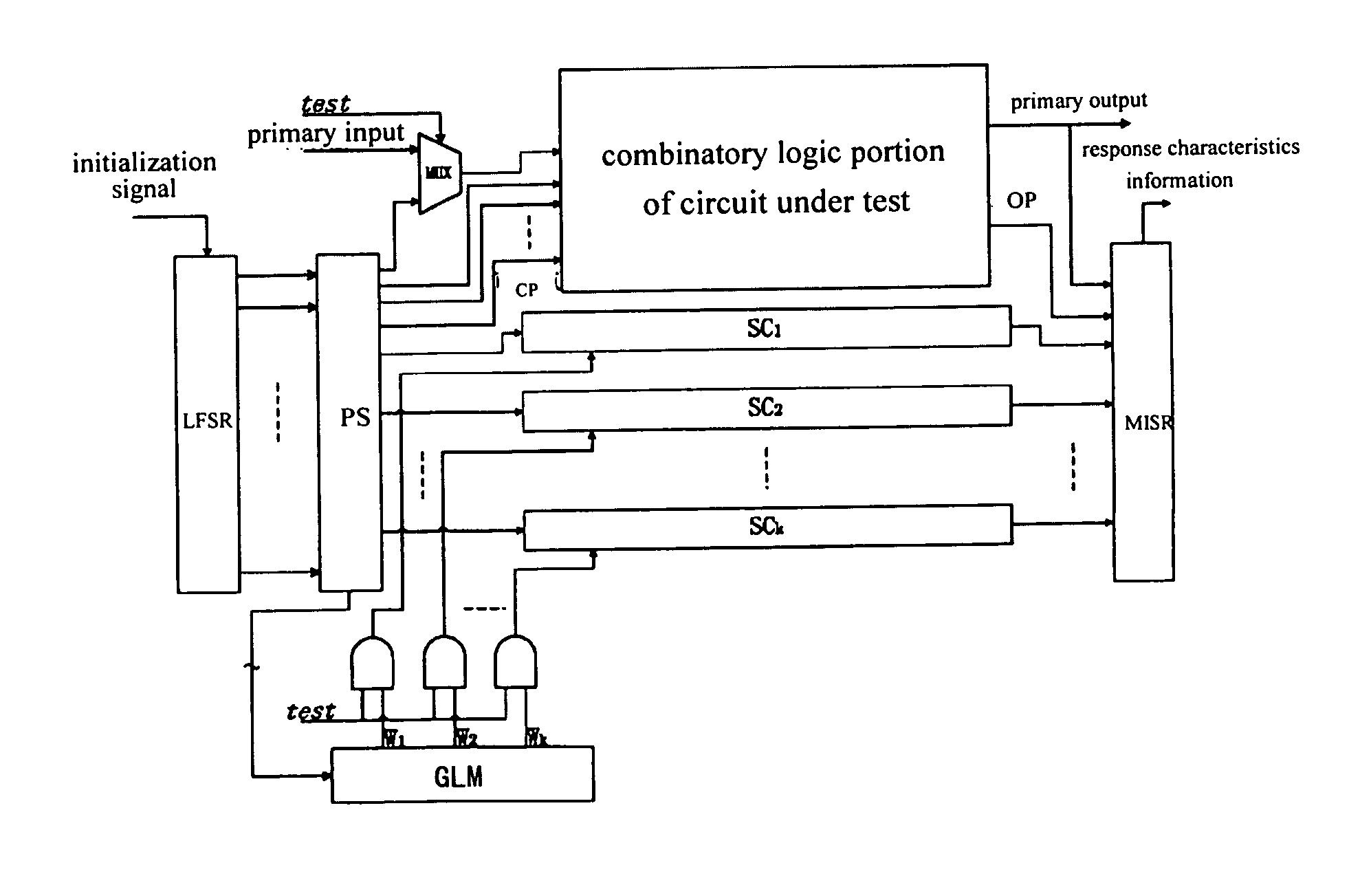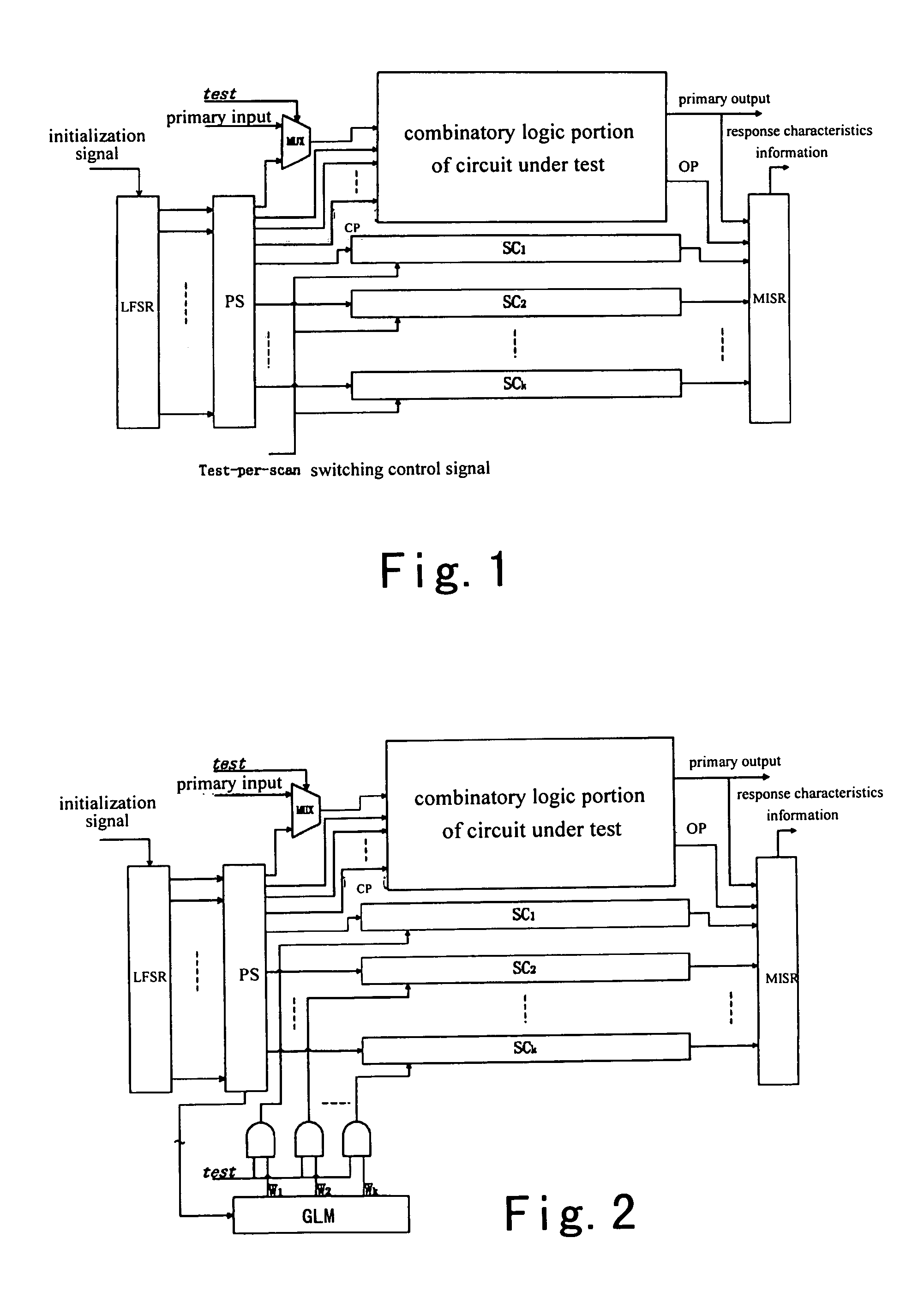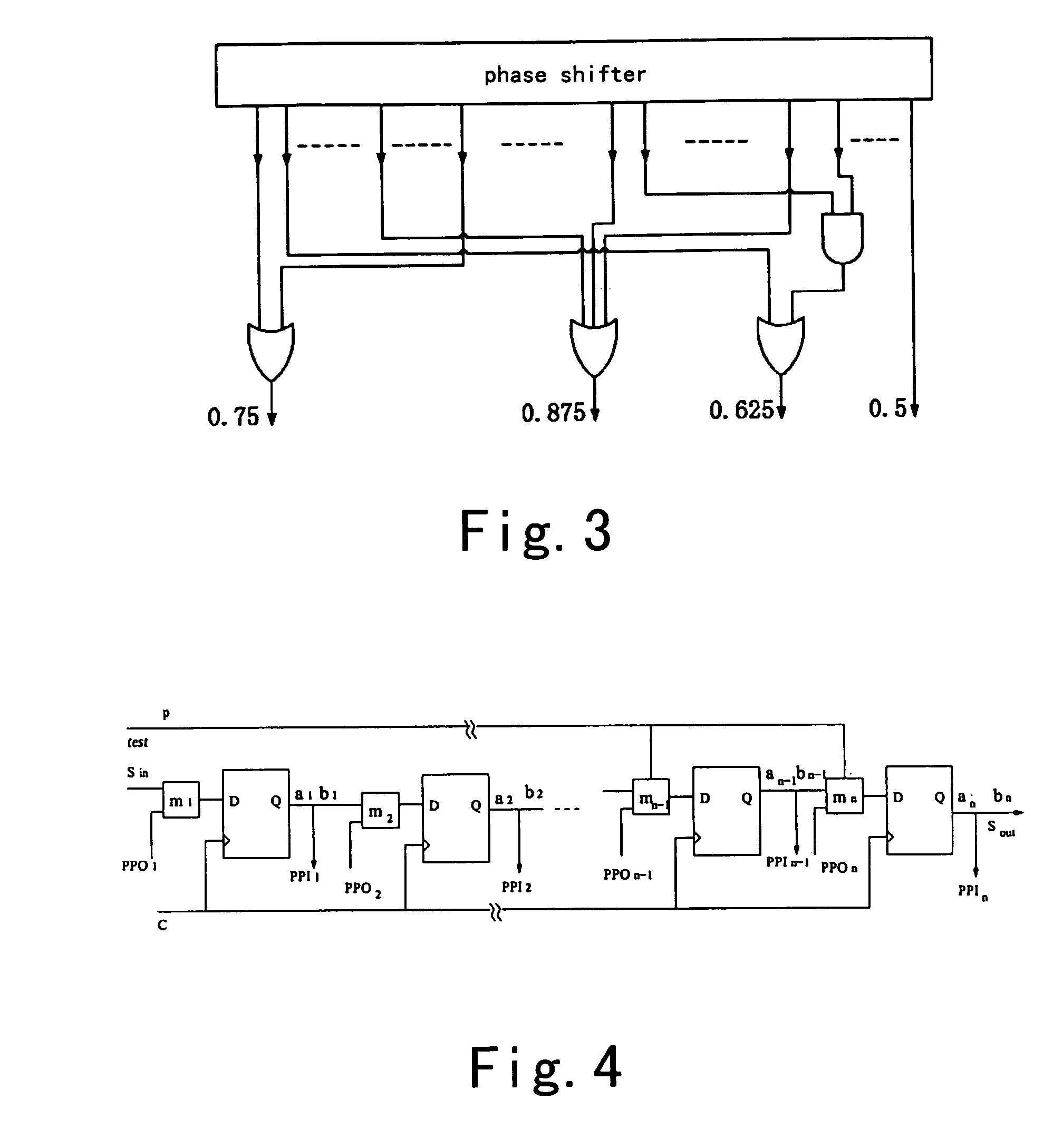Scan-based self-test structure and method using weighted scan-enable signals
a self-testing and scan-enabled technology, applied in the direction of electronic circuit testing, measurement devices, instruments, etc., can solve the problems of high hardware overhead and relatively short test time required by such self-testing structures, and achieve the effect of convenient implementation
- Summary
- Abstract
- Description
- Claims
- Application Information
AI Technical Summary
Benefits of technology
Problems solved by technology
Method used
Image
Examples
Embodiment Construction
[0063]FIG. 2 shows a basic block diagram of the circuit structure according to an embodiment of the present invention. Weights W1, W2, . . . , Wk ∈ {0.5, 0.625, 0.75, 0.85} are assigned to scan enable signals of scan chains SC1, SC2, . . . , SCk respectively. MUX represents a multiplexer. The selected weights are connected to the scan enable signals of the scan chains through k AND gate. One input of each AND gate is a switch signal for switching between a test mode and a normal operation mode, which is marked as test. When test=1, the system is in the test mode, and weighted scan enable signals are applied to the scan chains to generate weighted test pattern; when test=0, the system turns to the normal operation mode.
[0064] It is essential to select appropriate weights for the scan chains as shown in FIG. 2. This may affect final test results of the circuit. The present embodiment provides an algorithm and a circuit testability gain function. Selection of weights assigned to the s...
PUM
 Login to View More
Login to View More Abstract
Description
Claims
Application Information
 Login to View More
Login to View More - R&D
- Intellectual Property
- Life Sciences
- Materials
- Tech Scout
- Unparalleled Data Quality
- Higher Quality Content
- 60% Fewer Hallucinations
Browse by: Latest US Patents, China's latest patents, Technical Efficacy Thesaurus, Application Domain, Technology Topic, Popular Technical Reports.
© 2025 PatSnap. All rights reserved.Legal|Privacy policy|Modern Slavery Act Transparency Statement|Sitemap|About US| Contact US: help@patsnap.com



